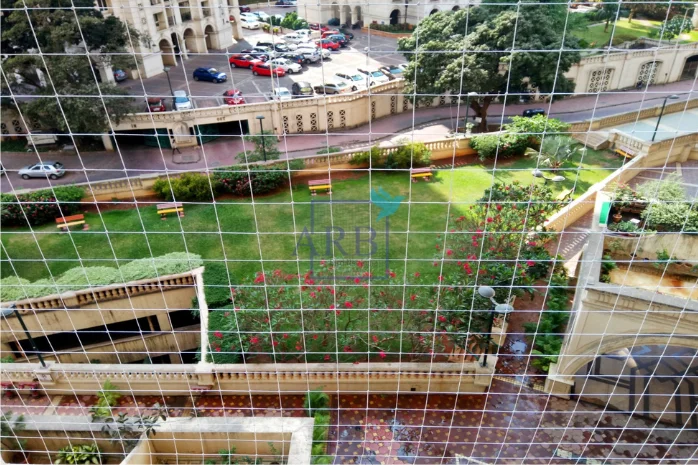
Common Mistakes to Avoid When Installing Bird Netting
Birds can be charming and delightful creatures, but they can also become a nuisance when they decide to take up residence in unwanted places. Their droppings can deface buildings, damage property, and pose health risks. This is where bird netting comes to the rescue. Bird netting is a humane and effective way to deter birds from nesting and roosting in certain areas. However, installing bird netting isn't as simple as it may seem. There are several common mistakes that people make when installing bird netting that can render it ineffective and costly. In this blog, we will discuss these mistakes and provide tips on how to avoid them.
Choosing the Wrong Netting Material
One of the most common mistakes when installing bird netting is choosing the wrong type of netting material. Bird netting comes in various materials, such as polyethylene, nylon, and stainless steel. Each material has its unique properties and applications.
Nylon netting is a cost-effective option but may not be suitable for areas with strong UV exposure or where birds might peck at the netting. HDPE Polyethylene netting is more durable and resistant to UV damage, making it a better choice for outdoor installations. With Stainless steel wire framing is the most durable and long-lasting option, ideal for high-traffic areas or where birds are prone to causing damage.
To avoid this mistake, assess your specific needs and the conditions of the installation site before selecting the appropriate netting material.
Incorrectly Measuring the Area
Another common mistake is not measuring the area accurately. Underestimating the size of the area that needs bird netting can result in an insufficient amount of netting, leaving gaps that birds can exploit. Conversely, overestimating can lead to unnecessary expenses.
To avoid this mistake, measure the area carefully and consult with a professional if you are unsure about the dimensions. Always add a little extra to ensure complete coverage.
Poorly Secured Netting
Effective bird netting must be securely fastened to prevent birds from pushing or pulling it aside to gain access. Failing to secure the netting properly is a significant mistake. Common issues include using inadequate fasteners, not tensioning the netting correctly, or failing to close off all potential entry points.
To avoid this mistake, invest in high-quality netting clips, anchors, and cables. Make sure the netting is tensioned properly, eliminating any sagging or loose areas that birds could exploit. Inspect the installation regularly and make adjustments as needed.
Neglecting Maintenance
Bird netting requires ongoing maintenance to remain effective. One of the common mistakes is neglecting this aspect. Over time, netting can accumulate dirt, debris, and even bird droppings, which can compromise its functionality. Additionally, severe weather conditions can cause wear and tear.
To avoid this mistake, establish a regular maintenance schedule. Clean the netting, inspect for damage, and make any necessary repairs promptly. Proper maintenance will extend the life of the netting and ensure its continued effectiveness.
Ignoring Local Regulations
Installing bird netting without considering local regulations and permits is a costly mistake. Many areas have specific rules regarding bird control measures, including netting. Failure to comply with these regulations can result in fines and legal troubles.
To avoid this mistake, research the local laws and regulations pertaining to bird control. Obtain any necessary permits before installing bird netting to ensure you are in compliance with the law.
Choosing the Wrong Mesh Size
The size of the mesh in your bird netting is crucial for its effectiveness. Selecting the wrong mesh size is a common mistake. If the mesh is too large, smaller birds can slip through, defeating the purpose of the netting. If the mesh is too small, it may not be suitable for the type of birds you are trying to deter, and it can create wind resistance issues.
To avoid this mistake, consult with a professional or research the specific bird species you want to deter. Choose a mesh size that is appropriate for the size of the birds while allowing for adequate air circulation.
Installing Netting in High-Wind Areas
Installing bird netting in high-wind areas without proper reinforcement is a common mistake. Strong winds can cause the netting to tear or become dislodged, rendering it ineffective and potentially causing damage.
To avoid this mistake, reinforce the netting with additional anchors and cables in high- wind areas. Consult with a professional to ensure the installation is secure.
Conclusion
Bird netting is a highly effective and humane solution for deterring birds from unwanted areas. However, avoiding common mistakes during the installation process is crucial to its success. Choosing the right netting material, accurately measuring the area, securely fastening the netting, conducting regular maintenance, complying with local regulations, selecting the correct mesh size, and reinforcing installations in high-wind areas are all essential considerations to ensure the effectiveness of bird netting. By avoiding these mistakes, you can create a bird-free environment that protects your property and maintains its aesthetic appeal.